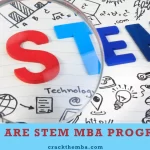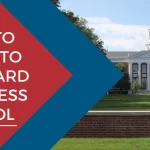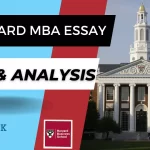What are M7 Business Schools and What Makes the M7 MBA Elite (2025)
The M7 business schools, short for “Magnificent 7”, represent the most prestigious MBA programs in the world. The M7 business schools include Harvard, Stanford, Wharton, Booth, Kellogg, Columbia, and MIT Sloan. M7 MBA refers to the group of 7 most elite business schools in the world. These prestigious business schools form the backbone of global business education, offering some of the world’s most competitive and career-transforming MBA programs.
Whether you’re eyeing a role in MBB consulting, investment banking, big tech, or launching your own venture, an M7 MBA opens doors like no other. This comprehensive guide breaks down everything you need to know about M7 MBA programs, including class profiles, employment outcomes, MBA costs, scholarships, industry placements, and updated rankings.
If you’re considering an M7 MBA, this guide breaks down what makes these programs stand out, what it takes to get in, and how they compare.
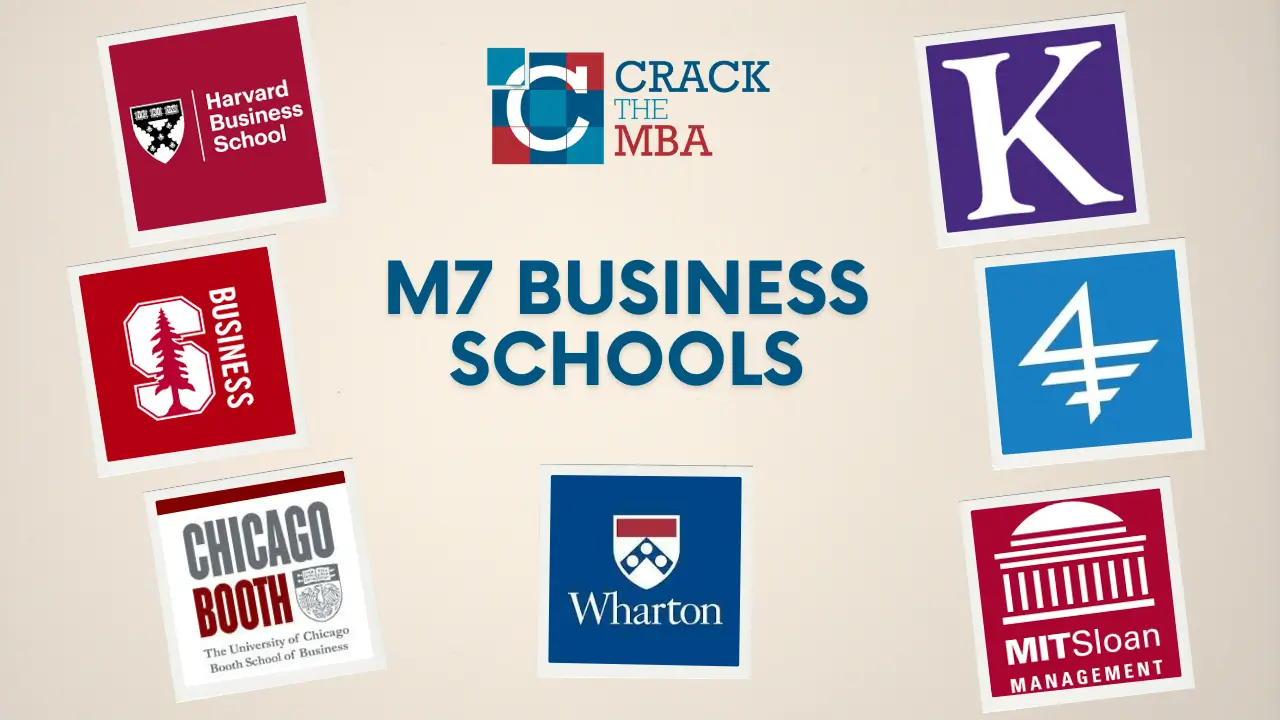
- What are the M7 Business Schools?
- What is an M7 MBA? Why should you get an M7 MBA?
- Which is the Best M7 Business School for Your MBA Journey?
- How are the M7 business schools ranked?
- M7 MBA Class of 2026: Profile Snapshot
- M7 MBA Class of 2024: Employment Outcomes
- M7 Business Schools – Cost of attendance
- M7 MBA Alumni Networks
- Final Thoughts
What are the M7 Business Schools?
The M7 business schools, short for “Magnificent Seven,” represent an elite group of top-tier MBA programs in the world. These schools include:
- Columbia Business School
- Harvard Business School (HBS)
- Stanford Graduate School of Business (GSB)
- The Wharton School (University of Pennsylvania)
- MIT Sloan School of Management
- Chicago Booth School of Business
- Kellogg School of Management (Northwestern University)
Years ago, the deans of the seven most influential private business schools got together to create an informal network known as M7. The schools convene twice every year to share information and chat about some of the most pressing issues in graduate business education. The schools hold two annual meetings to exchange information and ideas about graduate management programs.
What is an M7 MBA? Why should you get an M7 MBA?
An MBA from one of the above-mentioned elite institutions is an M7 MBA.
If you want to get a good return on your MBA investment, consider applying to one of the M7 schools, which frequently score near the top of worldwide MBA rankings thanks to their cutting-edge research, illustrious faculty, rigorous coursework, and successful alumni networks.
Enrolling in the full-time MBA program at one of the M7 business schools is a terrific first step if you want to advance your career and increase your earning potential. Top-tier companies from every sector actively seek graduates from these institutions.
To reiterate, joining an M7 business school also gives you access to top faculty, real-world experiences, and accomplished peers and alumni, among other things.
Which is the Best M7 Business School for Your MBA Journey?
Use this interactive tool to know everything about your target M7 business school. Select the M7 business school to get a detailed profile from an admissions point of view. This tool will help you research your target M7 business school for the 2025-2026 MBA application cycle.
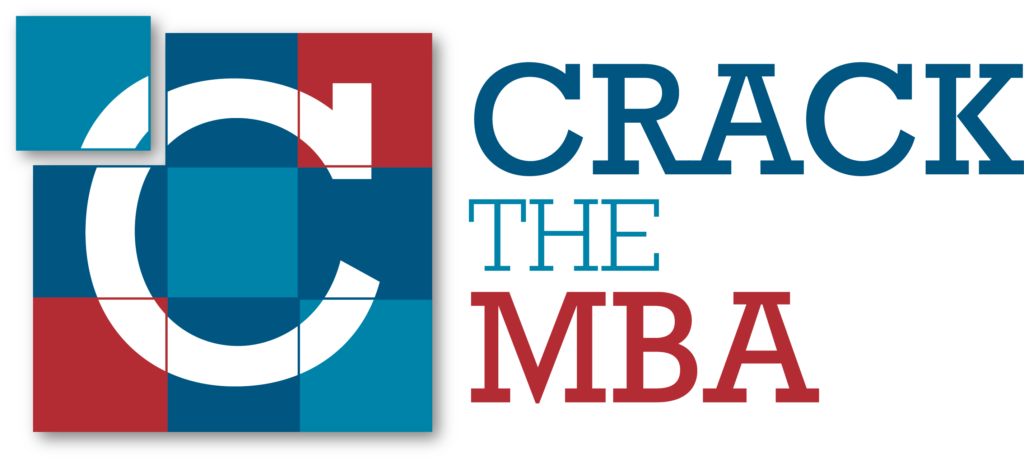
Explore M7 MBA Outcomes
Class of 2026 — Class Profile
How are the M7 business schools ranked?
Take a look at how US News, Financial Times, and QS rank the M7 business schools in 2025:
| Business School | U.S. News Rank | Financial Times Rank | QS Global Rank |
|---|---|---|---|
| The Wharton School | 1 | 1 | 2 |
| Stanford Graduate School of Business | 2 (tie) | 4 | 1 |
| Northwestern Kellogg School of Management | 2 (tie) | 6 | 12 |
| University of Chicago Booth School | 4 | 4 | 13 |
| MIT Sloan School of Management | 5 | 5 | 4 |
| Harvard Business School | 6 (tie) | 3 | 3 |
| Columbia Business School | 9 | 2 | 8 |
All M7 business schools are ranked highly in reputed global MBA rankings. But, how do they rank keeping in mind different specializations? Let’s find out.
MBA Rankings by Specialization
According to the QS ranking for 2023, Stanford GSB is the best school for Entrepreneurship, Marketing, and Technology. Wharton is the best school for Finance and Consulting.
Check out the ranking of MBA career specializations at M7 business schools:
| School Name | Consulting | Finance | Marketing | Technology | Entrepreneurship |
| Harvard Business School | 4 | 2 | 5 | 6 | 2 |
| Stanford Graduate School of Business | 14 | 3 | 1 | 1 | 1 |
| The Wharton School | 1 | 1 | 18 | 8 | 10 |
| Kellogg School of Management | 18 | 8 | 8 | 22 | 27 |
| Columbia Business School | 8 | 4 | 13 | 14 | 20 |
| Chicago Booth School of Business | 3 | 6 | 51-60 | 20 | 33 |
| MIT Sloan School of Management | 2 | 16 | 91-100 | 2 | 9 |
Now that you know how M7 business schools rank, let’s find out how M7 business schools’ class profiles look like.
Do you want to get into M7 business schools?
At Crack The MBA, we have helped hundreds of students get into top MBA programs around the world. We would be happy to help you too. Get in touch with us to learn more about our MBA application services.
M7 MBA Class of 2026: Profile Snapshot
If you’re aiming for one of the prestigious M7 business schools, understanding how you stack up against the latest incoming class is a great starting point. The M7 schools—Harvard, Stanford, Wharton, Kellogg, Columbia, Booth, and MIT Sloan—are known not only for academic rigor and global prestige but also for attracting top-tier, diverse cohorts.
The following table presents a side-by-side comparison of the Class of 2026 across key metrics such as class size, academic and test score averages, gender diversity, and international representation.
M7 MBA Class of 2026 – Class Profile
| School Name | Class Size | Avg. Work Experience | Avg. GPA | Avg. GMAT | Avg. GRE | % Women | % International Students |
|---|---|---|---|---|---|---|---|
| Harvard Business School | 930 | 5 years | 3.69 | 740 | 326 | 45% | 35% |
| Stanford GSB | 424 | 5.1 years | 3.75 | 730 | 327 | 44% | 39% |
| The Wharton School | 866 | 5 years | 3.70 | 732 | 325 | 47% | 31% |
| Kellogg School of Management | 524 | 5.2 years | 3.70 | 733 | 325 | 50% | 40% |
| Columbia Business School | 972 | 5 years | 3.60 | 732 | 324 | 44% | 46% |
| Chicago Booth | 632 | 5 years | 3.60 | 729 | 324 | 42% | 35% |
| MIT Sloan | 433 | 5 years | 3.70 | 730 | 326 | 46% | 40% |
M7 MBA Class of 2026 Demographics
Key Insights from the M7 Class Profiles
- Gender Diversity: Kellogg leads with 50% women, followed closely by MIT Sloan (46%) and Wharton (47%), showcasing strong strides toward gender parity in business education.
- International Representation: Columbia stands out with 46% international students, reflecting its global location and diverse applicant pool. Sloan and Kellogg also show robust international presence.
- Academic Excellence: Stanford continues to attract candidates with the highest academic performance, posting an average GPA of 3.75. All other schools hover around the 3.6–3.7 mark, reflecting strong academic consistency across the M7.
- GMAT and GRE Scores: HBS reports the highest average GMAT (740), while GRE scores remain close across schools, ranging between 324–327.
- Class Size Variation: Stanford remains the most selective with just 424 students, whereas Columbia and Harvard enroll the largest cohorts—972 and 930, respectively.
This data not only helps prospective applicants benchmark their candidacy but also highlights how each M7 school builds a diverse, high-achieving class. If you’re applying, consider how your profile aligns—and where you can differentiate yourself.
M7 MBA Class of 2024: Employment Outcomes
The M7 business schools—Harvard, Stanford, Wharton, Booth, Columbia, Kellogg, and MIT Sloan—continue to set the gold standard for post-MBA career outcomes. Whether you’re aiming for MBB consulting, elite private equity, product management in tech, or launching a startup, here’s how the Class of 2024 fared across these powerhouse programs.
1. Job Offer & Acceptance Rates
Job Offers vs Job Acceptances
| School | Job Offers (3 months) | Job Acceptances (3 months) |
|---|---|---|
| HBS | 85% | 77% |
| Stanford GSB | 88% | 80% |
| Wharton | 93.1% | 88.2% |
| Booth | 86.8% | 84.1% |
| Columbia | 89% | 86.4% |
| Kellogg | 89.8% | 87.2% |
| MIT Sloan | 85.1% | 77.2% |
Insight: Wharton, Booth, and Kellogg lead with the highest reported job acceptance rates, showing strong school-employer relationships and student job readiness.
2. Top Industries: Where the Class Went
Top Industries: Consulting vs Finance vs Technology
| School | Consulting | Finance | Technology |
|---|---|---|---|
| HBS | 18% | 36%* | 16% |
| Stanford GSB | 14% | 37%* | 22% |
| Wharton | 24% | 39% | 17% |
| Booth | 33.8% | 32.9% | 14.8% |
| Columbia | 30.6% | 35.9% | 10% |
| Kellogg | 35% | 19% | 20% |
| MIT Sloan | 32.1% | 25.3% | 19% |
📝 *Includes private equity and venture capital.
Insight:
- Consulting: Kellogg, Booth, and Sloan lead placement with over 30% heading into firms like McKinsey, BCG, Bain.
- Finance: Wharton and Stanford dominate, with salaries hitting $200K+ in hedge funds and private equity.
- Technology: Stanford and Kellogg show strength in tech, while Sloan’s proximity to innovation hubs boosts PM hiring.
3. Compensation Overview
Median Salary & Bonuses
| School | Median Base Salary | Median Signing Bonus | Performance Bonus (Median) |
|---|---|---|---|
| HBS | $175,000 | $30,000 | $47,500 |
| Stanford GSB | $185,000 | $30,000 | $50,000 |
| Wharton | $175,000 | $30,000 | $30,000 |
| Booth | $175,000 | $30,000 | Data not available |
| Columbia | $175,000 | $30,000 | $21,185 (other guaranteed) |
| Kellogg | $170,000 | $30,000 | Data not specified |
| MIT Sloan | $169,370 | $30,000 | $40,000 |
Insight: Stanford leads in both median base salary and performance bonus. Signing bonuses remain flat across all M7s at $30K median.
4. Geographic Distribution
U.S. vs International Placements
| School | U.S. Placements | Top U.S. Regions | International Placements |
|---|---|---|---|
| HBS | 88% | Northeast (49%), West (17%) | 12% |
| Stanford GSB | 91% | West (45%), Northeast (31%) | 9% |
| Wharton | ~90% | NYC, SF, Boston | 10% (Asia, Europe) |
| Booth | 94.1% | Midwest (29.9%), Northeast | 5.9% |
| Columbia | 79% | NYC-heavy | 21% (Asia 9%, Europe 5%) |
| Kellogg | 94% | Midwest & West | 6% |
| MIT Sloan | 93.2% | Northeast (47.5%), West | 5.4% |
Insight: Stanford and Columbia show strong international reach, while Booth, Sloan, and Wharton dominate in traditional U.S. job markets.
5. Entrepreneurship & Startups
% Started a Business vs Joined a Startup
| School | Started a Business (%) | Joined a Startup (%) | Median Startup Salary |
|---|---|---|---|
| HBS | 14% | 12% | $160,000 |
| Stanford GSB | 23% | Data not specified | High VC/Tech placements |
| Wharton | 6% | Data not specified | Not stated |
| Booth | 3.9% | Not specified | Not specified |
| Columbia | Not stated | Not stated | Not stated |
| Kellogg | 12 students (2.3%) | Not specified | Not stated |
| MIT Sloan | 10% | Not specified | Not specified |
📌 Insight: Stanford and HBS remain hubs for entrepreneurship. Sloan’s innovation culture also drives high startup engagement.
6. Top Functions by Hiring Volume
Finance vs Consulting Hiring%
| School | Top 3 Functions |
|---|---|
| HBS | Finance (38%), Consulting (18%), GM (13%) |
| Stanford GSB | Finance (32%), GM (32%), Consulting (16%) |
| Wharton | Consulting, Investment Banking, PM |
| Booth | Consulting (35.2%), Finance (35.6%), PM |
| Columbia | Consulting (39.2%), Finance (36.9%), Mktg |
| Kellogg | Consulting, Tech (PM), Marketing |
| MIT Sloan | Consulting (35.7%), Finance (20.4%), PM |
Insight: Consulting and finance dominate, but product management and marketing are emerging as high-paying alternatives at Sloan, Kellogg, and Wharton.
Takeaways
- Compensation remains strong across M7, with Stanford grads topping out at $185K median salary.
- Consulting, finance, and tech continue to dominate M7 hiring, with noticeable variance in strengths across schools.
- Entrepreneurship thrives at Stanford, HBS, and Sloan—ideal for founders and innovators.
- Location matters: Stanford grads lean west, Columbia to NYC, Sloan to Boston, and Booth to Chicago.
- Career services and employer access at schools like Wharton, Kellogg, and Booth continue to yield high offer rates and wide industry reach.
M7 Business Schools – Cost of attendance
Pursuing an M7 MBA is a serious investment, with costs easily crossing $125,000 per year. However, each school offers a robust mix of need-based aid, fellowships, and merit-based scholarships to help reduce the financial burden.
Let’s compare the first-year cost of attendance and the key scholarship insights across the M7:
First-Year Cost of Attendance
| Business School | Tuition | Living + Fees | Health Insurance | Total Cost (Year 1) |
|---|---|---|---|---|
| Harvard (HBS) | $78,700 | $41,028 | $6,108 | $126,536 |
| Wharton (UPenn) | $87,970 | $34,952 | $4,662 | $132,224 |
| Stanford GSB | $82,455 | $39,888 | $8,403 | $130,746 |
| Chicago Booth | $84,198 | $38,791 | Included | $125,937 |
| Columbia Business School | $88,300 | $39,958 | $4,955 | $132,258 |
| Kellogg (Northwestern) | $83,610 | $39,633 | $5,571 | $125,191 |
| MIT Sloan | $84,350 | Varies (est. ~$35K+) | Included | ~$125,000 |
HBS and Sloan publish base figures; additional costs vary by lifestyle and location. Sloan’s cost varies due to unlisted housing/food figures.
Scholarships & Fellowships at M7 Schools
| School | Average Fellowship | Merit-Based Aid | Need-Based Aid | Special Fellowships |
|---|---|---|---|---|
| Stanford GSB | $94,000 total ($47K/year) | ❌ | ✅ | Knight-Hennessy, BOLD, Summer Stipends |
| Wharton | Varies widely | ✅ | ✅ | Prism (LGBTQ+), Forté, ROMBA, Social Impact |
| Booth | Not disclosed | ✅ | ✅ (Limited) | Obama Foundation, Siebel, Forté, PE Fellowships |
| Columbia | ~$20,000/year avg. | ✅ (some merit-based) | ✅ | Emerging Market, Diversity, Real Estate |
| Kellogg | Not disclosed | ✅ (extensive) | ✅ (limited) | Austin Scholars, Finance Fellows, Zell |
| HBS | $42K/year avg. | ❌ | ✅ | Boustany, Horace W. Goldsmith, Summer Fellowships |
| MIT Sloan | Not disclosed | ✅ | ✅ | Sloan Fellows, Legatum, Dean’s Fellowships |
Insight:
- Stanford and HBS lead with generous need-based fellowships.
- Booth, Wharton, and Kellogg offer extensive merit-based awards tied to leadership, diversity, and academic excellence.
- MIT Sloan and Columbia blend external partnerships and school-funded opportunities for targeted sectors.
Final Thoughts on ROI
While the total cost of a 2-year M7 MBA can exceed $250,000, the median post-MBA salaries ($170K–$185K+) and bonuses often lead to payback within 3–5 years. When layered with scholarships and fellowships, the financial ROI becomes even more attractive.
Each M7 school also supports loan programs, including international options without U.S. co-signers.
Now that you have a sense of how much it costs to attend an M7 business school, let’s see the lifelong value that being a part of an M7 business school can add to your life. Here are details on the alumni networks of M7 business schools.
Do you want to get into one of the M7 business schools?
At Crack The MBA, we have helped hundreds of students get into top MBA programs around the world. We would be happy to help you too. Get in touch with us to learn more about our MBA application services.
Take a look at these coprehemsive guide to get into 3 top MBA Programs – Harvard Business School, The Wharton School, and Stanford GSB.
M7 MBA Alumni Networks
A robust alumni network provides invaluable contacts, insights, information, and inroads into a new profession or industry. It also gives you the chance to stay engaged and involved with your classmates.
Alumni can be a great source of support as you go through life. Talking to alumni of desired business schools can help you learn more about the school’s culture, its alumni network, and employment opportunities.
A Bloomberg survey ranked Stanford’s alumni network as the best of all schools for helping graduates find employment.
Nearly 15,000 MBA alumni from 126 different schools around the world took part in the survey and rated their school’s alumni network in terms of its depth, breadth, and responsiveness. Based on their alumni networks, here is how the M7 business schools are ranked:
Harvard Business School
Harvard Business School has about 85,000 alumni in 173 countries. Leaders in many fields, HBS grads have risen to the top. There are 104 alumni clubs that offer professional, social, and educational initiatives to global leaders.
Here are a few well-known HBS MBA graduates:
- Rahul Bajaj, 1964 – CEO of Bajaj Auto
- Sheryl Sandberg, 1995 – COO of Facebook
- George W. Bush, 1975 – 43rd President of the United States and former Governor of Texas
- Salman Khan, 2003 – founder of Khan Academy
- Naina Lal Kidwai, 1982 – Group General Manager and Country Head of HSBC India
- Robert Kraft, 1965 – chairman and CEO of The Kraft Group, owner of the New England Patriots and New England Revolution
- Michael Bloomberg, 1966 – CEO of Bloomberg LP and former mayor of New York City
- Stephen Schwarzman, 1972 – Chairman and CEO of the Blackstone Group
- Ray Dalio, 1973 – Founder and Co-Chief Investment Officer of the Bridgewater Associates
- Jamie Dimon, 1982 – CEO and chairman of JPMorgan Chase
Stanford GSB
With over 30,000 graduates, the Stanford Graduate School of Business has a large and active alumni community that is actively engaged in fostering professional growth and fostering strong networks for its members.
Some famous people who went to Stanford GSB include:
- Mukesh Ambani, Billionaire Indian Businessman and Chairman of Reliance industries
- Phil Knight, Billionaire Founder and Chairman of Nike
- Mary Barra, Chairman, and CEO of General Motors
- Rishi Sunak, Prime Minister of the United Kingdom (2022–present)
- Jeffrey Bewkes, Chairman and CEO of Time Warner
- Roelof Botha, Venture Capitalist, Sequoia Capital Global Head
Wharton
Wharton’s alumni network is over 100,000 alumni spread throughout 153 countries. Students, staff, and faculty can get involved in the 77 clubs that are independent, self-supporting, and run by volunteers.
Here are some of the most famous people who went to Wharton:
- Sundar Pichai, CEO of Alphabet and Google
- Ashwini Vaishnaw, Indian Politician and Current Minister of Railways and Minister of IT and Communications
- Robert S. Kapito, founder and president of BlackRock (world’s largest asset manager)
- Rakesh Gangwal, chairman and CEO of US Airways
- Vikram Limaye, Managing Director and CEO of the National Stock Exchange of India Limited
- Anil Ambani, chairman of Reliance Group
- Sachin Pilot, Indian politician
Columbia Business School
Over 45,000 people have graduated from Columbia Business School, and there are 80 alumni groups in different countries. The alumni network’s mission is to provide its members with a variety of networking, learning, and professional development opportunities. Here are some of the most well-known alumni from CBS include:
- Benjamin M. Rosen, MBA 1961, Former chairman and CEO of Compaq
- Beth Ford, MBA 1995, CEO of Land O’Lakes
- Beverly Leon, MBA 2020, former midfielder for Sunderland A.F.C. Ladies
- Harvey Schwartz, MBA 1996, president and COO of Goldman Sachs
- Henry Kravis, MBA 1969,[57] Founder of Kohlberg Kravis Roberts & Co.
- Henry Swieca, MBA 1982, Co-Founder of Highbridge Capital Management, Founder of Talpion
- Jon Stein, MBA 2009, Founder and CEO of Betterment
- Jon Steinberg, MBA 2003, President of BuzzFeed
Kellogg School of Management
Across the globe, there are more than 65,000 graduates of Kellogg School of Management who are leaders in their fields. Roughly 35 alumni groups exist outside the United States, whereas there are 28 in the United States.
Some of the most well-known alumni from Kellogg’s MBA program include:
- Roshni Nadar, Executive Director, and CEO, HCL Corporation, Founder and CEO of the Shiv Nadar Foundation
- Darren Woods, Chairman, and CEO, ExxonMobil
- Pankaj Sahni – CEO at Medanta
- Kushagra Bajaj, Vice Chairman, Bajaj Hindusthan
- Chris Kubasik, former President and COO Lockheed Martin
- Alexander De Croo, Prime Minister of Belgium
- Christopher Galvin, Former Chairman and CEO of Motorola
- Ginni Rometty, Former CEO of IBM (2012-2020)
Chicago Booth School of Business
Chicago Booth boasts a global alumni community of 55,000 people, with roughly 10,000 of them working in C-suite roles. There are over 90 alumni clubs throughout the world where Booth grads can continue to mingle, network, and feel a part of the global Booth family. Some of the most famous alumni of Chicago Booth include:
- Satya Nadella, CEO at Microsoft
- Jon Corzine, former CEO of Goldman Sachs, former governor of New Jersey
- Brady Dougan, former CEO of Credit Suisse Group
- James M. Kilts, founding partner of Centerview Partners; former chairman, president, and CEO of Gillette Company
- Eric Kriss, co-founder of Bain Capital
- Mark Loughridge, CFO of IBM
- Matt Maloney, co-founder and CEO of GrubHub
- Dhiraj Rajaram, founder and CEO of Mu-Sigma
MIT Sloan School of Management
MIT Sloan graduates are instantly connected to a network of more than 24,000 MIT Sloan alumni and over 136,000 MIT alumni, who are successful leaders and innovators in a wide range of companies and fields worldwide.
Some of the most famous alumni from MIT Sloan include:
- Adi Godrej, chairman, Godrej Group
- Robin Chase, Co-founder and former CEO of Zipcar
- Douglas Leone, managing partner, Sequoia Capital
- Sumantra Ghoshal, founding dean, Indian School of Business
- Ron Williams, former CEO, Aetna
- Thornton Wilson, former CEO, Boeing
- Randy Woelfel, CEO, Nova Chemicals
- Kofi Annan, 7th Secretary-General of the United Nations
Final Thoughts
Getting into M7 business schools can have a long-lasting impact on your career and can boost your career in more ways than you can imagine. If M7 business schools are on your list of target business schools, reach out to our team today to get started on your journey to Crack The MBA at M7 business schools.
Author
Related Posts:
Recent Posts
Archives
Ready for Expert Guidance?
Get personalized support to craft your winning MBA application.
Schedule Free Consultation
